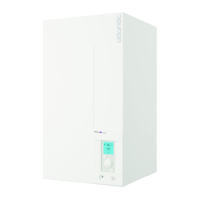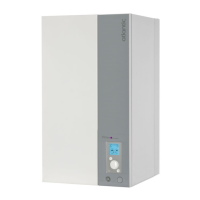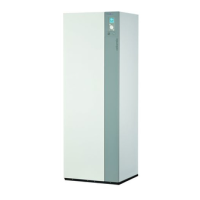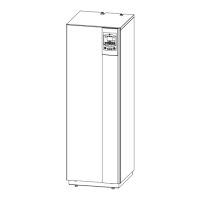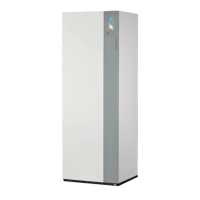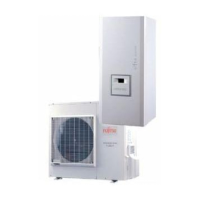- 4 -
►
Outdoor unit
The outdoor unit, as its name suggests, is placed outside
your dwelling, and extracts energy from the outside air.
This unit was installed by your installer in a location
where it is able to operate with best performance.
Nothing should obstruct the air circulation through the
evaporator and out from the fan.
The water contained in the air may condense and fl ow
out of the outdoor unit. The outdoor unit can generate a
large volume of water called condensate.
In cold weather, this water freezes on contact with the
exchanger and must be regularly removed using the
defrosting cycles. The defrosting cycle is managed
automatically by the control system and can produce
steam emissions which are completely normal.
►
Hydraulic unit
The hydraulic unit is located in your boiler room,
cellar, garage, and transfers energy to the heating and
domestic hot water circuits*.
The hydraulic unit contains the appliance’s control
system which manages the room temperature and the
production of domestic hot water.
The hydraulic unit is fi tted with an electrical backup*
or boiler connection* which intervenes to provide
additional heat during the coldest periods.
►
Settings
Your installer has carefully adjusted your installation.
Do not change the settings without their consent.
If in doubt, do not hesitate to contact them.
Your heating system is controlled by adjustment in
relation to the outdoor temperature (temperature
control).
The outside sensor monitors the outdoor temperature.
The installation of a room thermostat (option) makes it
possible to improve the operation of the control system
(infl uence of the ambient temperature is taken into
account).
►
Radiators
In order to ensure operation of the control system,
the room containing the thermostat must not also
contain a thermostatic valve. If this is the case, it must
be opened as far as possible.
►
Underfl oor heating system
A new underfl oor heating system must initially be
heated slowly to avoid any problems involving cracking.
Check with your installer that this initial heating
procedure has indeed been performed before freely
using your heating system.
An underfl oor heating system’s signifi cant inertia
prevents sudden room temperature diff erences.
However, this inertia implies a reaction time of around
several hours (approx 6 hours).
Any changes to the setting must be made slowly
and leave the installation suffi cient time to react. Any
exaggerated or abrupt adjustments to the settings
always result in signifi cant temperature fl uctuations
during the day.
Similarly if your dwelling has an underfl oor heating
system, do not reduce it or switch it off if you will be
absent for only short periods. The reheating period is
always quite long (approx 6 hours).
►
Fan coils / dynamic radiators with
an integrated control system
Do not use a room sensor in the area in question.
►
Domestic Hot Water (DHW)*
When hot water is required, the heat pump adapts its
priority to meet the request.
No heating is produced during the preparation of
domestic hot water.
The heat pump produces the domestic hot water
(DHW), which is then additionally heated, if required,
by the electrical backup.
To ensure a DHW setpoint over 45°C, the electrical
backup heating or boiler (boiler connection kit)* must
be left on.
The electrical backup allows the correct operation of the
anti-legionella cycles.
Your installation
* depending on confi guration / option
alfea A.I. R32 / Operating manual / 2111 - EN
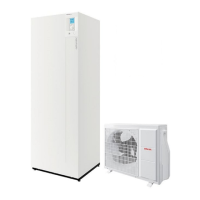
